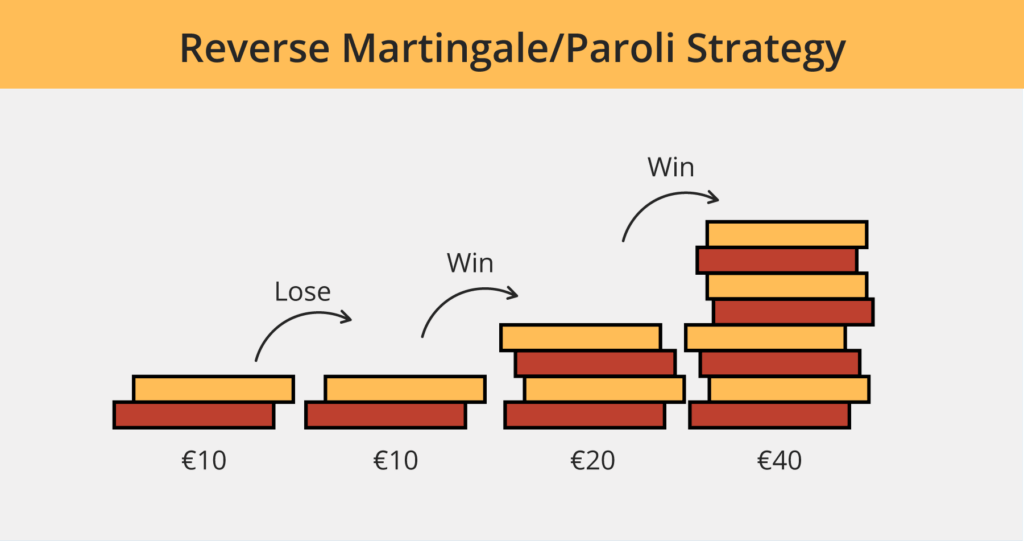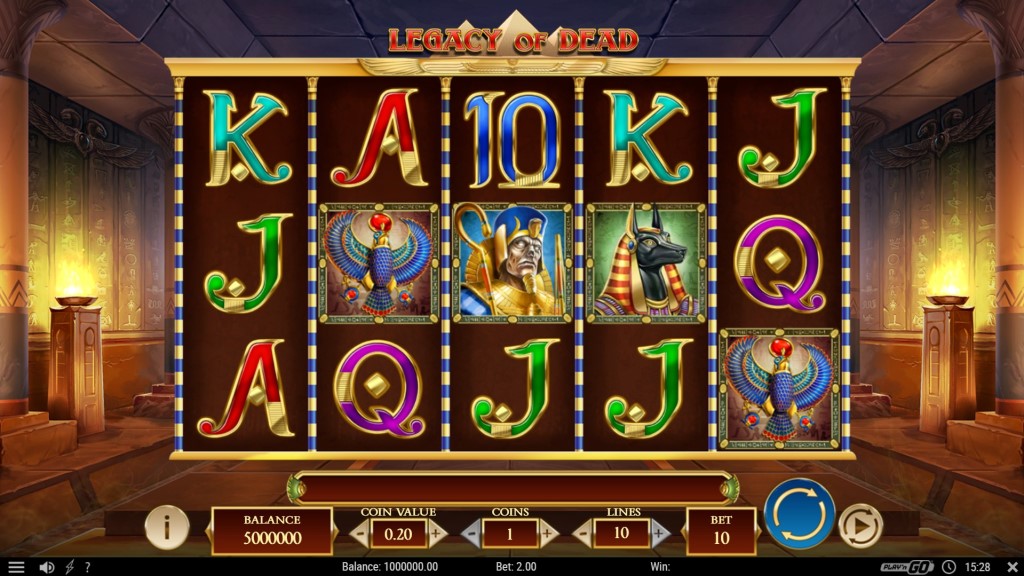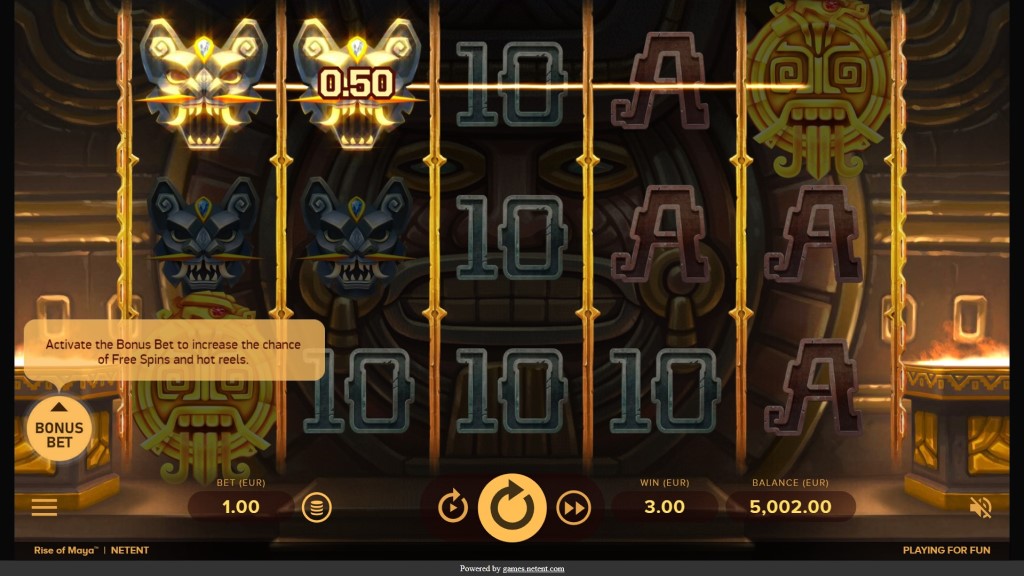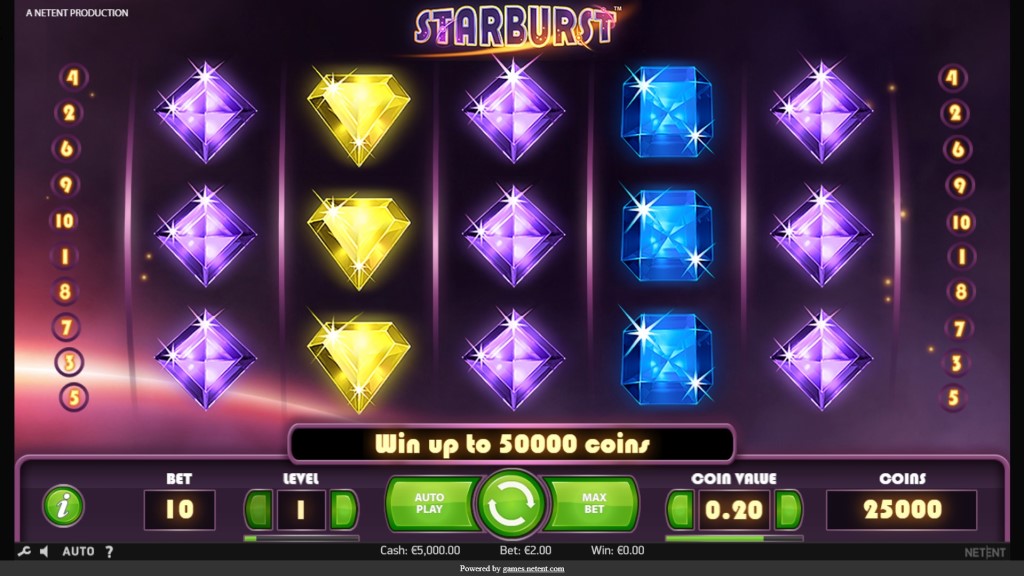In this article, the Reverse Martingale Strategy will be explored, offering readers a glimpse into one of the most intriguing and widely-used betting techniques adopted by gamblers across the globe. Whether one is a seasoned player or a novice, understanding the Reverse Martingale Strategy can significantly enhance their chances of success and transform their overall gambling experience. With its unique and distinctive approach to betting, this roulette strategy has garnered popularity among both casual players and professionals alike. Joining in on this exploration will provide an in-depth understanding of the inner workings of this fascinating strategy, enabling individuals to make informed decisions and optimize their wagers for maximum advantage.

What is the Reverse Martingale Strategy?
The Reverse Martingale Strategy, also known as the Paroli System, is a renowned betting approach widely employed in games of chance. Setting itself apart from the traditional Martingale strategy, this method takes a different route to wagering. Rather than doubling bets after losses, the Reverse Martingale focuses on increasing bets following wins and decreasing them after losses.
The core objective of this strategy is to capitalize on winning streaks and maximize profits during favorable runs. By progressively raising bets after each successful outcome, players aim to ride the wave of success and extract the utmost value from positive sequences. The foundation of this approach lies in the belief that winning streaks often occur in clusters, and the strategy seeks to take advantage of these clusters by compounding gains.
While the Reverse Martingale offers the potential for significant profits, it must be approached with caution due to inherent risks. Sustaining a losing streak can deplete funds rapidly, especially if bets are drastically increased after wins. Thus, prudent bankroll management and setting predetermined win and loss limits are essential to maintaining control and safeguarding one’s resources.
This strategy can be applied to various games, such as roulette, blackjack, craps, and other games where players can adjust their bets. However, it is crucial to recognize that each game has its own dynamics, odds, and risk factors. Therefore, adapting the strategy to suit the specific game being played is crucial for optimizing results.
How does the Paroli System work?
The Reverse Martingale Strategy operates on a fundamental principle of capitalizing on winning streaks while mitigating losses during periods of unfavorable outcomes. By amplifying bets following a win and diminishing them after a loss, players seek to maximize profits during moments of success and minimize potential losses during downturns.
To effectively implement this strategy, players adhere to the following steps:
- Establish a base bet: Commence with a conservative initial bet amount that aligns with your comfort level.
- Increase after a win: In the event of a win, double your wager for the subsequent round.
- Continue increasing after wins: As long as you keep winning, progressively double your bet after each successive triumph.
- Set a winning goal: Define a specific amount you aim to win, and once you attain that target, reset your bets to the base amount.
- Reduce after a loss: If you encounter a loss, revert to your base bet and start anew, waiting for the next winning streak to resume increasing your bets.
By following these steps, players can strategically navigate their betting patterns, making the most of favorable outcomes while safeguarding their bankroll during less fortunate times.
Reverse Martingale Strategy Variations
D’Alembert Variation
The D’Alembert variation offers a more conservative approach to the Reverse Martingale strategy, focusing on adjusting bet sizes gradually. After a win, the player increases the bet by one unit, and after a loss, the bet size is decreased by one unit. This variation aims to reduce the risk of significant losses and provides a more steady progression.
Fibonacci Variation
The Fibonacci variation introduces the concept of the Fibonacci sequence into the Reverse Martingale strategy. Starting with a small bet, subsequent bet sizes follow the Fibonacci sequence, where each bet is equal to the sum of the two preceding bets. For example, if the initial bet is $1, the sequence might progress as $1, $1, $2, $3, $5, $8, and so on. This structured variation emphasizes progressive betting after wins.
Grand Martingale Variation
The Grand Martingale variation takes a more aggressive approach by increasing the bet size after both wins and losses. Following the traditional Martingale strategy, the bet is doubled after a loss. However, this variation also amplifies the bet after a win, aiming to recover losses quickly and potentially yield larger profits during winning streaks. Keep in mind that the Grand Martingale variation carries a higher risk of substantial losses.
1-3-2-6 Variation
The 1-3-2-6 variation introduces a specific betting sequence into the Reverse Martingale strategy. After each win, the player follows a predefined sequence of bet multipliers: 1, 3, 2, and 6. For instance, starting with a small bet of $1, a win would lead to a bet of $3, another win would result in a bet of $2, and a third consecutive win would escalate the bet to $6. In case of a loss at any point, the player returns to the initial bet of $1. This variation provides a structured and progressive betting pattern while maintaining control over bet sizes.
How Effective is the Paroli strategy in online casino games?
The effectiveness of the Reverse Martingale strategy in online casino games depends on a variety of factors, including the specific game, the player’s skill level, and luck. Here are some key considerations regarding its effectiveness:
- Game Dynamics: The strategy is most commonly applied in games with even-money bets or those that allow players to adjust their bet sizes. Games like roulette (betting on red/black, odd/even), blackjack (betting on player hand), or certain online slots offer suitable conditions for the Reverse Martingale strategy. However, in games with limited betting options or where progressive betting is not feasible, the strategy may not be as effective.
- Winning Streak Frequency: The success of the Reverse Martingale relies on extended winning streaks to maximize profits. The frequency and duration of winning streaks can vary significantly in online casino games, influenced by random number generators or the inherent odds of the game. While the strategy can be highly effective during favorable streaks, it may not yield significant gains during shorter or less frequent winning runs.
- Bankroll Management: Effective bankroll management is crucial when employing the Reverse Martingale strategy online. Players must ensure they have sufficient funds to withstand potential losses during losing streaks and take full advantage of winning streaks. Setting clear win and loss limits is essential to protect profits and prevent substantial losses.
- Table Limits and Casino Policies: Online casinos often impose maximum bet limits, which can limit the effectiveness of the Reverse Martingale strategy. If the bet progression reaches the table limit, players may be unable to continue increasing their bets as intended. Considering these limitations and choosing games and casinos with higher table limits can better accommodate the strategy.
- Randomness and Chance: Online casino games use RNGs to ensure fairness and unpredictability. The outcome of each bet is determined by chance, and winning or losing streaks cannot be guaranteed. While the Reverse Martingale strategy aims to capitalize on winning streaks, there is no certainty that such streaks will occur or persist for an extended period.
Advantages of the Reverse Martingale Strategy
The Reverse Martingale Strategy offers several compelling advantages that make it an attractive choice for many gamblers. Let’s delve into some of the key benefits of this strategy:
- Capitalizing on Winning Streaks: One of the primary advantages of the Reverse Martingale Strategy is its ability to capitalize on winning streaks. By progressively increasing bets after each win, players have the opportunity to maximize their profits during periods of favorable outcomes. This approach allows them to make the most of consecutive wins and significantly boost their winnings.
- Controlled Risk: Unlike the traditional Martingale strategy, which exposes players to the risk of significant losses during extended losing streaks, the Reverse Martingale Strategy employs a more controlled approach. By reducing bet sizes after a loss, it helps mitigate potential losses and allows players to maintain better control over their bankroll.
- Emotional Satisfaction: The Reverse Martingale Strategy can provide a unique sense of excitement and satisfaction. Experiencing a series of wins and witnessing the gradual increase in bets during a winning streak can be exhilarating for players. It adds an extra layer of enjoyment to the gambling experience and contributes to the thrill of strategic betting.
Disadvantages of the Reverse Martingale Strategy
While the Reverse Martingale Strategy offers alluring advantages, it’s crucial to acknowledge its limitations and potential downsides. Consider the following disadvantages before implementing this strategy:
- Vulnerability to Losing Streaks: Just as the Reverse Martingale Strategy excels during winning streaks, it is susceptible to extended losing streaks. If players encounter a series of losses, the strategy’s effectiveness diminishes, and it becomes essential to have a contingency plan in place to manage potential losses.
- Requires Discipline and Self-Control: Successfully executing the Reverse Martingale Strategy demands a high level of discipline and self-control. The temptation to deviate from the strategy after experiencing a few wins or losses can be significant. Sticking to the plan consistently is vital for achieving long-term success.
- Limited Applicability: The Reverse Martingale Strategy is most effective in games with even odds or those that allow players to adjust their bet sizes freely. For instance, it may work well in roulette for red or black bets. However, in games with complex payout structures or those heavily influenced by skill, the strategy may not yield favorable results.
- Reliance on Winning Streaks: The strategy heavily relies on winning streaks to maximize profits. While winning streaks can be lucrative, they are inherently unpredictable and not guaranteed to occur consistently. Depending solely on winning streaks could lead to disappointing results during periods of neutral or negative outcomes.
- Risk of Depleting Bankroll: Despite attempting to mitigate losses, the Reverse Martingale Strategy still carries risks, especially during extended losing streaks. If not managed carefully, a significant losing streak could deplete a player’s bankroll, making it challenging to recover losses and continue with the strategy effectively.
FAQs
The Reverse Martingale Strategy, also known as the Paroli System, is a betting approach that involves increasing bets after each win and reducing them after a loss. It aims to capitalize on winning streaks and maximize profits during favorable runs.
Unlike the traditional Martingale strategy, which involves doubling bets after losses, the Reverse Martingale Strategy focuses on increasing bets after wins and decreasing them after losses.
The Reverse Martingale Strategy can be applied to games with even-money bets or those that allow players to adjust their bet sizes. Common examples include roulette (red/black, odd/even), blackjack (betting on player hand), and certain online slots.
No, the Reverse Martingale Strategy, like all betting strategies, does not guarantee winnings. While it can be effective during winning streaks, the outcome of each bet is still subject to chance and randomness.
Prudent bankroll management is essential. Set clear win and loss limits before starting, and avoid chasing losses. Ensure you have sufficient funds to withstand potential losing streaks and take advantage of winning streaks.
Conclusion
In conclusion, the Reverse Martingale Strategy, also referred to as the Paroli System, offers a fascinating approach to betting in games of chance. By maximizing profits during winning streaks and managing losses during downturns, it presents an enticing opportunity to enhance your gambling experience. However, it is important to be mindful of the strategy’s limitations and to exercise discipline and self-control while utilizing it. Adhering to prudent bankroll management and recognizing the role of luck and chance will contribute to a more rewarding and enjoyable betting journey.









